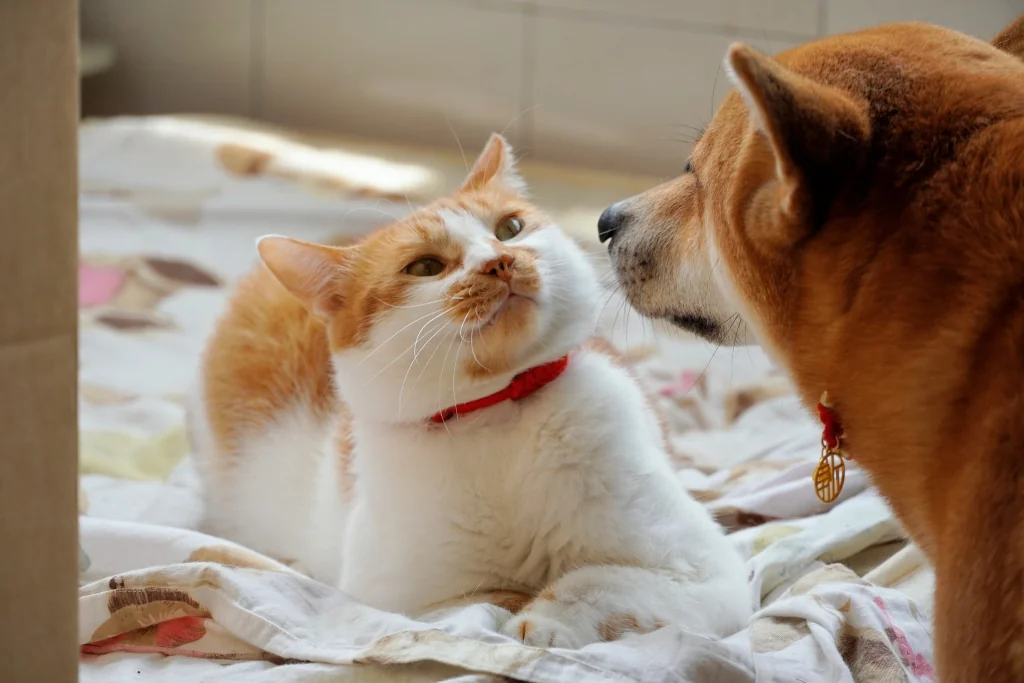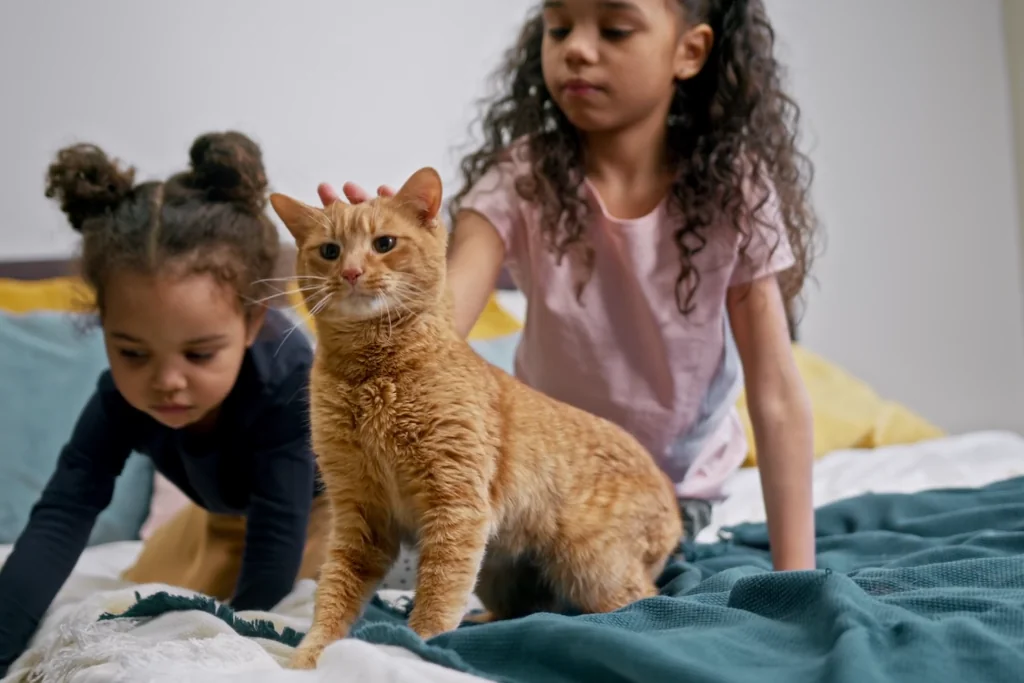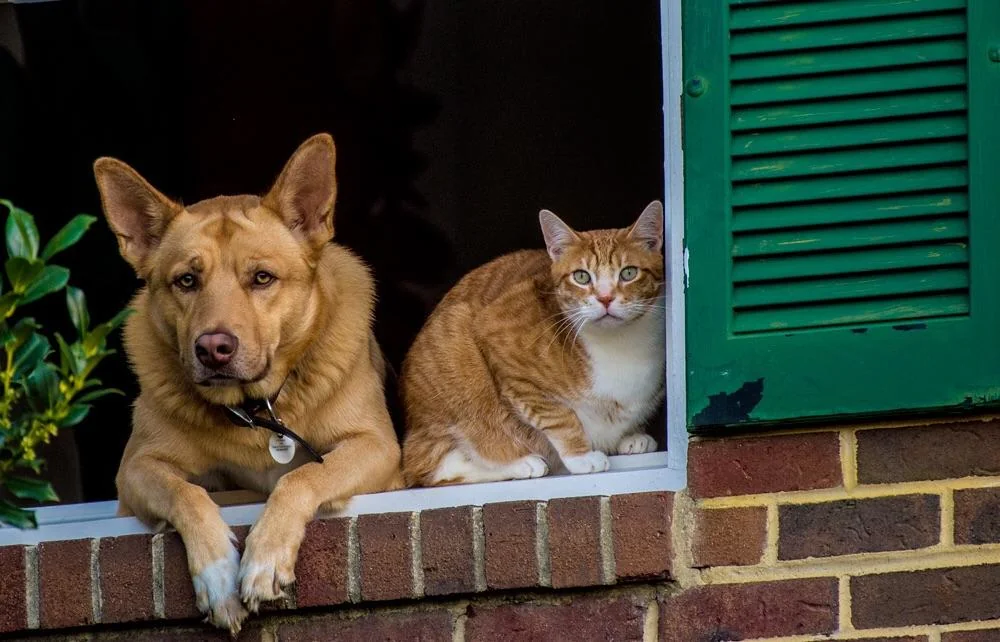Note: We may earn a commission from helpful, relevant links in our content. No cost to you. See our privacy policy.
If you thought introducing your new partner to your parents was nerve-wracking, wait till you try introducing your cat to a new pet or, heaven forbid, a toddler.
Fear not! We’ve got your back on this.
At AnimalReport, we understand that introducing your feline friend to other family members, whether they’re furry or not, can feel like walking a tightrope.
The worry of potential hissing fits, a tumble of claws and fur, or tiny tear-streaked faces is enough to send any cat parent into a frenzy. But trust us when we say it doesn’t have to be a circus act.
Stick around, and we’ll show you just how to juggle this like a pro.

First Things First: Preparation
Preparation is key, not just in baking a perfect soufflé, but also when you’re introducing your cat to a new member of the family.
To start with, ensure both parties have their safe zones. These could be a particular room, a crate, or even a designated spot on the couch for your cat. Baby gates can be an effective solution for creating separate areas, allowing your pets to get used to each other’s presence gradually.
Familiar scents can do wonders in calming nerves, so consider introducing the smell of the new member to your cat in advance. A blanket or a toy will do the trick.
Trust us, familiar scents work like magic in creating a comforting environment for your cat during this crucial transition.
This is your cat’s turf, and we’re trying to ensure they don’t feel threatened in any way.
The First Meeting: Keeping It Safe and Stress-Free
Now comes the part that probably has your heart pounding – the first meeting.
When it’s time for the first face-to-face, keep it controlled. Depending on your cat’s personality, it could be wise to have them in a carrier or behind a baby gate initially. Let them observe each other, smell each other, without the risk of any aggressive face-offs.
For children, brief them beforehand on the importance of quiet, gentle interaction. Remember, this isn’t the time for hands-on play. Let’s keep it as a “look but don’t touch” event to start with.
Remember, we’re going for stress-free, not sprint-free. So take it slow, take it easy.
Helping Your Cat Feel Comfortable Around Other Pets
To ease your cat into feeling comfortable around other pets, it’s essential to turn the attention towards their innate curiosity.
Here’s where your role as a cat-detective comes in: get to know your feline’s body language. Look for signs of interest like perked-up ears, slow blinking, and forward posture.
When you notice these signs during supervised interactions with the new pet, reward your cat with treats and praises. This associates positivity with the presence of the other pet.
A truly unique and often overlooked method of creating comfort is to bring in some element of play. Introduce shared playtime with a toy that can be enjoyed by both your cat and the other pet.
An interactive laser pointer or a feather teaser that keeps them both engaged can be perfect. This not only diverts their attention from each other but also lets them associate the other’s presence with fun times.
But remember to keep these play sessions short and sweet in the beginning, to avoid overwhelming your cat.

Dealing With Potential Issues During Introductions
Introducing your cat to a new pet might come with a few challenges, but rest assured, most problems have simple and effective solutions.
- Aggression. If you notice your cat becoming aggressive, it’s vital to take a step back. Never punish your cat for this behavior as it can escalate their fear or stress. Instead, go back to the introduction phase, keeping them separated, but letting them sniff out each other’s scent. Gradually increase the duration of their supervised face-to-face meetings.
- Fear. If your cat seems scared, make sure they have plenty of hideouts and elevated spaces to retreat, such as cat trees. Cats seek high places when they feel threatened. Offering such places can make them feel safer.
- Disinterest. If your cat shows lack of interest, don’t rush them into interactions. Cats have their own pace, and it’s essential to respect that. Keep doing the scent exchanges, and give it more time.
- Bullying. If the other pet is bullying the cat, you should intervene immediately. Consistent bullying can result in the cat fearing the other pet permanently. Supervise their interactions closely until a healthy dynamic is established. Use distractions, like toys or treats, to diffuse tension. Consider getting professional advice if this issue persists.
In all these scenarios, patience and understanding are your best tools. Remember, our goal is a harmonious household, and that’s a journey, not a sprint.

Fostering Harmonious Relationships at Home
Building a harmonious relationship at home goes beyond the initial stages of introductions.
It requires consistent efforts that nurture the bond between your cat and the other members of your household, whether they’re pets or children.
An age-old adage goes, “Variety is the spice of life,” and it holds true for your pets as well. Avoid favoritism, and ensure each pet receives unique playtime and affection from you. Introduce diverse toys, games, and interaction routines for them.
This keeps the environment stimulating and reduces the chance of jealousy and territorial behavior.
In addition, communication is crucial in any relationship. Observe and understand their language. Cats communicate a lot with their
By learning their signals, you can intervene timely and prevent any potential squabble.
Based on my personal experience, here’s a pearl of wisdom: Create shared positive experiences. Remember the shared playtime I mentioned earlier? Let’s take that a notch higher.
Organize a treat party where your pets enjoy their favorite treats together. Or initiate a grooming session where they witness each other getting pampered. Such shared experiences can gradually replace their insecurities with mutual acceptance.
FAQ
How can I prepare my other pets for a new cat’s arrival?
You can prepare your other pets for a new cat’s arrival by gradually introducing the new cat’s scent using blankets or toys, and rewarding your pets for calm behavior around these items.
What are signs of a successful introduction between a cat and a child?
Signs of a successful introduction between a cat and a child include the cat showing relaxed body language, purring, and willingly approaching the child for interactions.
Are certain cat breeds better with children or other pets?
Breeds like Ragdolls, Maine Coons, and British Shorthairs are generally known for their docile nature and adapt well with children and other pets. However, individual temperament can vary.
What if my cat shows signs of stress during the introduction?
If your cat shows signs of stress during the introduction, like excessive hiding, or aggression, or changes in eating habits, it might be beneficial to slow down the introduction process and give your cat more time to adjust.
Alex, a passionate animal lover, has experience in training and understanding animal behavior. As a proud pet parent to two dogs and three cats, he founded AnimalReport.net to share insights from animal experts and expand his knowledge of the animal kingdom.









